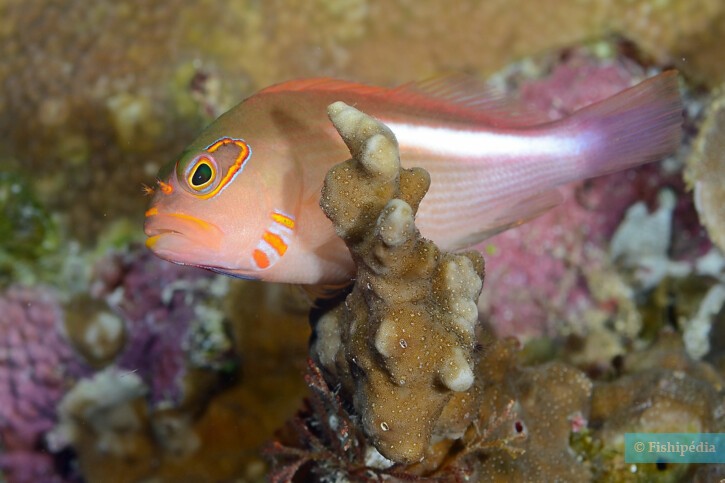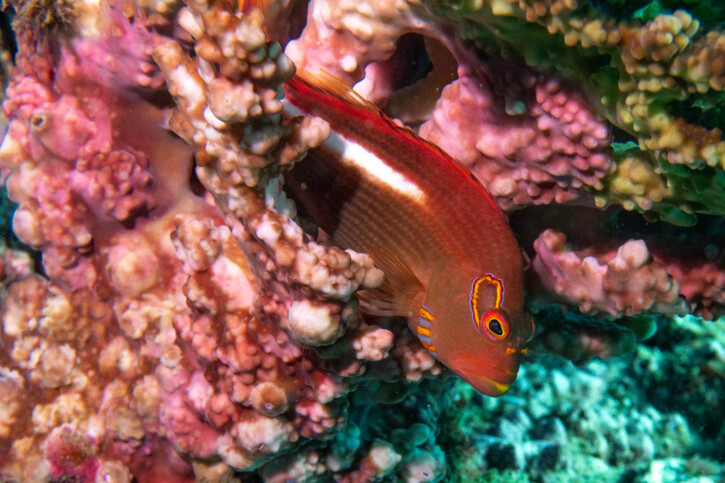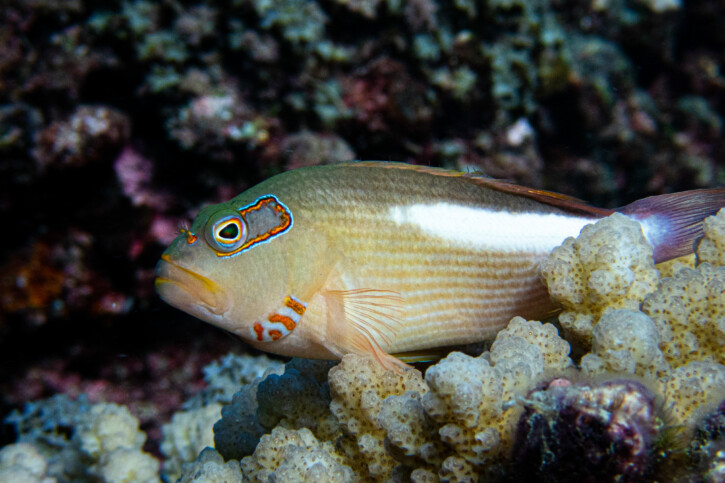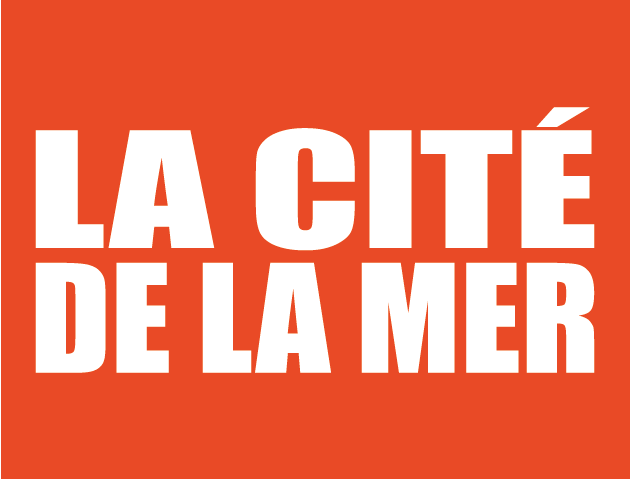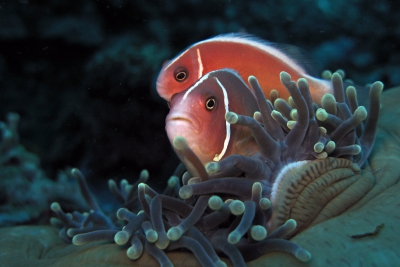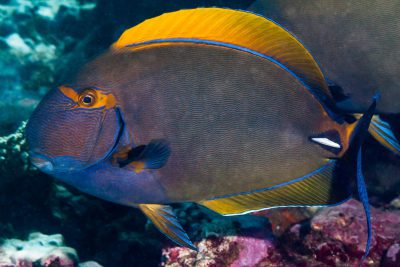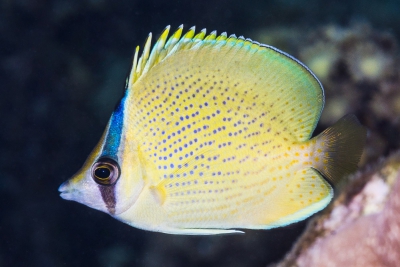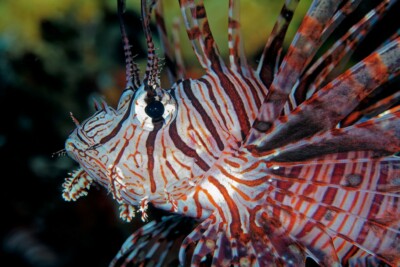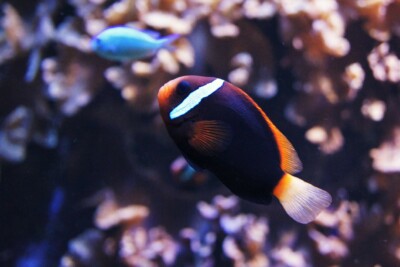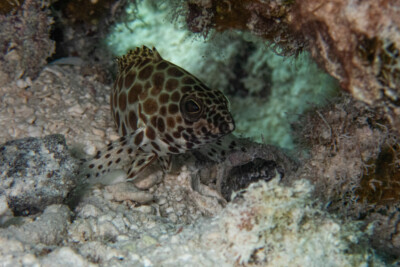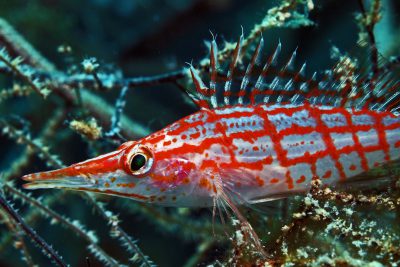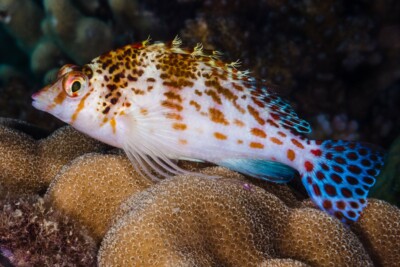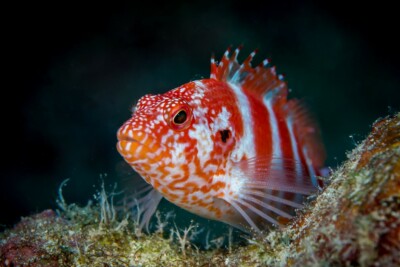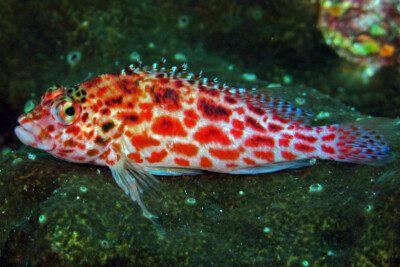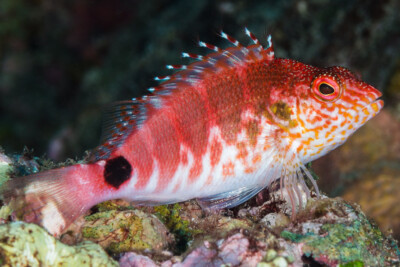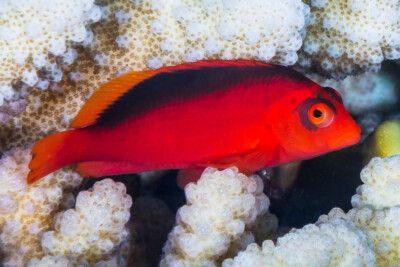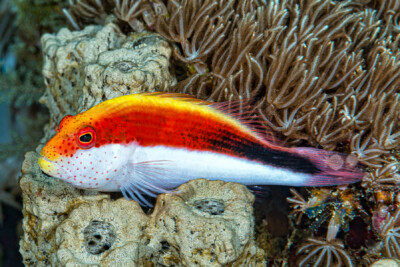arc-eye hawkfish
| Scientific name | Paracirrhites arcatus |
|---|---|
| Descriptor | Cuvier |
| Year of description | 1829 |
| IUCN category (World) | LC |
| Family | Cirrhitidae |
| Genus | Paracirrhites |
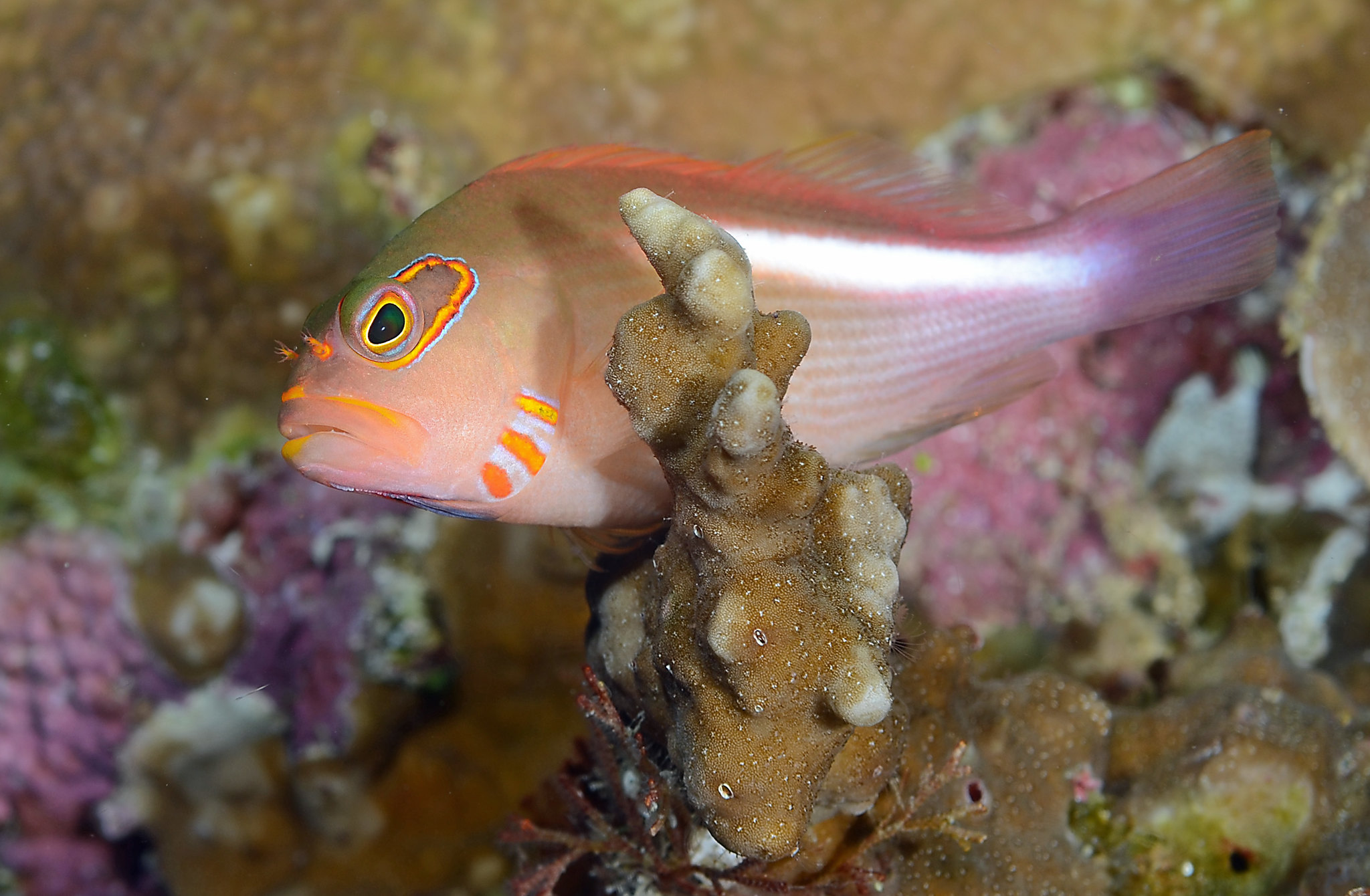

Introduction
Paracirrhites arcatus, commonly known as arc-eye hawkfish, is a salt water fish.
This sheet is currently being prepared. The texts currently proposed come from our data model or are being drafted. To request priority for this content, you can write to us HERE.
Who is it?
Morphology
-
Average size15 cm
-
Maximum size20 cm
-
Average size15 cm
-
Maximum size20 cm
How to recognize This fish ?
The arc-eye hawkfish measures between 15 and 20 cm. This fish is bicolore with a predominantly rouge, marron and blanc body.
Behaviour & Life cycle
-
dietcarnivorous
-
Sociabilitysolitary
-
territorialYes
-
Way of livingdiurnal
The arc-eye hawkfish is a fish solitary. This species is carnivorous .
This species is territorial and does not appreciate the presence of intruders nearby, especially animals with similar behavior. It can also be virulent toward conspecifics. However, the arc-eye hawkfish has little concern for non-territorial animals.
Reproduction
-
Reproductionovipare qui pond en eau libre
-
PolygamyYes
The arc-eye hawkfish is a fish ovipare qui pond en eau libre. In this species, the dominant males are polygamous and reproduce each season with several females.
Harmless species
This species does not represent any particular threats to humans when encountered in its natural environment.
Origin and distribution

What is its habitat?
Natural environment characteristics
-
Temperature24 - 27 °C
-
Depth1 - 33 m
-
EnvironmentFree benthic
Biotope presentation
The arc-eye hawkfish is most often found at a depth between 1m and 33m. However, it is not impossible to find this species at other depths.
Species of the same biotope
To go further
Sources & Contributions
Participation & Validation
The Fishipedia team and specialist contributors are committed to providing high-quality content. However, although the information comes from scientific sources or testimonials from specialists, the cards may contain inaccuracies.
Translation
Translation done with the valuable contribution of our translators, who make this information available to a wider audience. We sincerely thank them for their commitment.
Scientific partners
Tags
#Cirrhitidae
#Paracirrhites
#barrière de corail
#lagon
#platier
#récifs extérieurs
#Bay of Bengal
#Great Barrier Reef
#East China Sea
#Philippine Sea
#Sea of Japan
#South East Asian Seas
#Indonesian seas
#western Indian Ocean
#Western Tropical Pacific Ocean
#Bali
#Mauritius
#Réunion
#Lombok
#Maldives
#Nusa Penida
#French Polynesia
#Zanzibar Archipelago
Species of the same family
Same genus
Species of the same biotope
